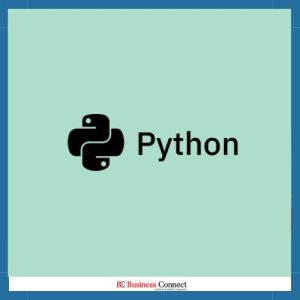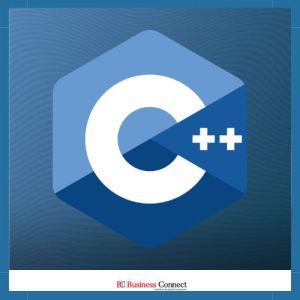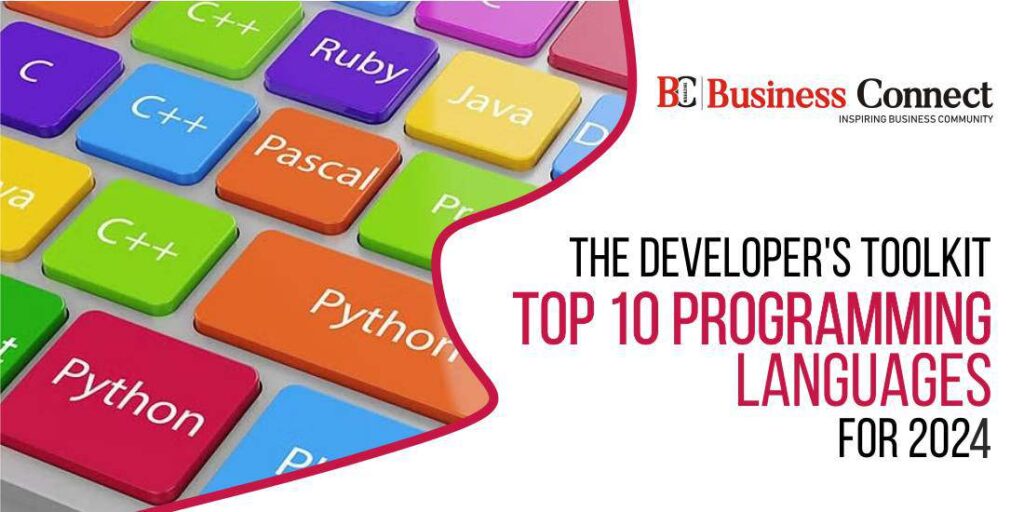The Developer’s Toolkit: Top 10 Programming Languages for 2024
By Jaya Pathak
A computer is a versatile machine that can execute millions of instructions in an alternate, but can neither suppose or make any opinions on its own. Thus, a program is a set of instructions written in a sequence that guides the computer to perform a particular task. Irrespective of the language being used, the first and foremost thing to be done while writing a program is to understand the problem well, assay it and try to break it in a logical manner. The process of writing a program is called Programming.
Programming languages have been developed to meet the conditions of programmers and individual stoners. They are an effective tool to develop operations that positively impact the working of an association, economy and society by adding productivity and perfecting effectiveness.
Types of Programming Language
- Procedural Programming Language: It’s predicated on the generality of units and compass of an executable law statement. It’s composed of one or further units. Some of the notable examples of procedural language are- Java, Occam, CPL, ALGOL 60, Ada, Curl, DASL, ECMAScript, Jscript, C++, C etc.
- Functional Programming Language: The functional programming languages define programs as fine functions & treat them as first- class. multitudinous functional languages are amalgamated with fine calculation tools. Some of the functional languages are- Hope, spare, KRC, Mercury, PureScript, Miranda, Ceylon, Curl, Lisp, Rust, Scala, Swift and numerous further.
- Object- acquainted Programming Language: This type of programming language treats a program as a group of objects composed of data. The objects can be reused within a program. Some of the notable object- acquainted programmes are Java, Dart, Lava, Lua, Curl, D, PHP, X, Ceylon, C#, C++ etc.
- Scripting Programming Language: It’s used for automating the constantly used tasks. Some of the notorious scripting programming languages include AngelScript, supervisor 2, Python, REBOL, Red, Rexx, GDScript, JASS, BeanShell, AutoHotKey etc.
- Logic Programming Language: Logic predicated programming languages concentrate on expressing data and rules by instructing the computer to make opinions. It’s a set of attributes that has a result. Some of the notable sense programming languages are as follows- ALF, Curry, Oz, Prolog, Janus, Datalog, Alma 0, ROOP, Fril etc.
PYTHON

Python is an open- source, object- acquainted, high- position programming language. It was developed by Guido van Rossum in 1991 at the National Research Institute for Mathematics and Computer Science, the Netherlands.
Python is a general- purpose programming language that can be used effectively to make any kind of program that does not bear direct access to the computer’s attack.
It’s predicated on the ABC language and was inspired by the notorious BBC comedy show Monty Python’s Flying Circus.
Features of Python
- Python is an interactive, interpreted language with a simple syntax.
- It’s getting increasingly popular owing to its various features which are as under Python is an interpreted, interactive, directly executed languages with a pre- collected law. This means that it’s reused at runtime by the guru and you need not collect your program before executing it.
- It’s roughly compartmented object- acquainted programming language with numerous keywords, simple English- alike structure and is easy to learn.
- It’s a free, open- source and portable language having a large repository of libraries.
- It takes lower time to develop as Python programmes are generally 3 to 5 times shorter than the original programming languages. This is because of its erected- in, high- position data types and its dynamic typing.
- It’s extensible/ extendable and largely effective as there is no destruction of time in declaring the types of variables or arguments.
- It supports GUI (Graphical user Interface) and scrap collection (better memory operation).
- It’s easily compatible with other languages like C, C, Core JAVA etc. Python is used for both scientific and non- scientific programming.
Advantages of Python
- a) Python is platform-independent and can run across different platforms like Windows, Linux, mac0S and other operating systems.
- b) Python programs use clear, simple, concise and English- suchlike instructions that are easy to read and understand indeed by non- programmers.
- c) It’s an interactive, interpreted and Object- acquainted Programming language.
- d) Since Python is a simple language with small canons and extensive libraries, it offers advanced productivity to programmers as compared to languages like C and Java.
- e) Because of a simple and shorter law, lower time is demanded to understand and learn Python programming.
- f) Python supports GUI operations that can be created and ported to multitudinous system calls, libraries and window systems analogous as Windows MFC, Macintosh and the X Window system of UNIX.
Limitations of Python
- Python is slower than C or C. But it a high- position language and unlike C or C, it is not near to attack.
- Python is not considered truly good for mobile development. It’s seen as a weak language for mobile computing. This is the reason truly numerous mobile operations are erected in it.
- Python is not a good choice for memory-ferocious tasks. Due to the strictness of data types, Python’s memory consumption is also high.
- Python has its limitations with database access. As compared to popular technologies like JDBC and ODBC, Python’s database access caste is set up to be a bit underdeveloped and primitive.
- Python programmers have cited several issues with the design of the language. Since the language is roundly compartmentalized, it requires farther testing and has crimes that only show up at runtime.
It’s a programming language first appeared in 1995. It was designed by Brendan Eich of Netscape originally. It’s a high- position language that conforms to the ECMAScript standard.
JavaScript conforms to the ECMAScript standard, which defines the language’s specifications and features. It ensures thickness and interoperability across different JavaScript machines and executions.
It’s stoutly compartmented, meaning you do not need to declare the data type of a variable explicitly. JavaScript uses a prototype- grounded object- acquainted programming model. It treats functions as first- class citizens. This means you can assign functions to variables, pass them as arguments to other functions, and return them as values from functions.
JavaScript is amulti-paradigm language, which means it supports different programming styles, including event- driven(common for web development), functional and imperative( procedural) programming. JavaScript provides colorful APIs (operation Programming Interfaces) that allow inventors to interact with different aspects of the terrain.
It can manipulate the DOM to stoutly modernize web runners, respond to stoner relations, and produce interactive web operations. The DOM is a representation of the structure and content of a web runner.
Features of JavaScript
- JavaScript supports structured programming.
- JavaScript is weakly compartmented, meaning that type transformations are performed implicitly grounded on the operation being used.
- It has an eval function which can execute statements at run- time. JavaScript has dynamic typing. JavaScript uses prototype- grounded Object- heritage.
- It functions as Object Constructors. The new keyword can be used to produce cases of objects with parcels and styles defined by the constructor.
- JavaScript doesn’t distinguish between function and system delineations. It has Functional Programming. It treats functions as first- class objects.
- JavaScript supports both implicit and unequivocal delegation for object- acquainted programming.
- JavaScript uses a prototype chain for heritage, with objects inheriting parcels and styles from their prototypes.
C++

C++ is a high- position general- purpose programming language. It was developed by Danish computer scientist Bjarne Stroustrup. It was first released in 1985.
C++ was designed with a focus on performance, effectiveness, and inflexibility. It’s frequently used in systems programming, where low- position control and high performance are pivotal. C started as an extension of the C programming language.
It has evolved to include object- acquainted programming (OOP) features, allowing inventors to produce classes and objects. It also supports general programming with templates and functional programming with features like lambda expressions.
C++ provides installations for low- position memory manipulation, including pointers and direct memory access, making it suitable for systems programming and tasks where fine- granulated memory control is needed.
C++ is nearly always enforced as a collected language. It’s restated into machine law by a compiler before prosecution. Numerous merchandisers give C++ compilers, including the Free Software Foundation (GCC), LLVM, Microsoft (Visual C), Intel, Embarcadero (C Builder), Oracle (Solaris Studio), and IBM (XL C).
Features of C++
- C++ supports Object- acquainted Programming.
- While C++ law isn’t platform-independent, it’s machine-independent. C is designed to be a fairly simple language with lots of functions.
- It provides a variety of data types and features for breaking down programs into logical units.
- C++ is considered a high- position language.
- It’s objectifications numerous low- position details, making it easier to write and understand law.
- C++ is an extensively used programming language, especially in systems programming, game development, and high- performance operations.
- Its fashionability is due to its effectiveness, versatility, and support for OOP.
- C++ is case-sensitive, meaning it distinguishes between uppercase and lowercase letters. For illustration,” cin” and” Cin” are treated as different identifiers.
- C++ is a collected language, which means that source law is restated into machine law by a compiler before prosecution. This compendium step results in briskly prosecution compared to interpreted languages like Python.
- C++ allows dynamic memory allocation, which means you can allocate and deallocate memory during runtime using drivers like new and delete. This point provides inflexibility in managing memory coffers.
- It has an awful memory operation.




